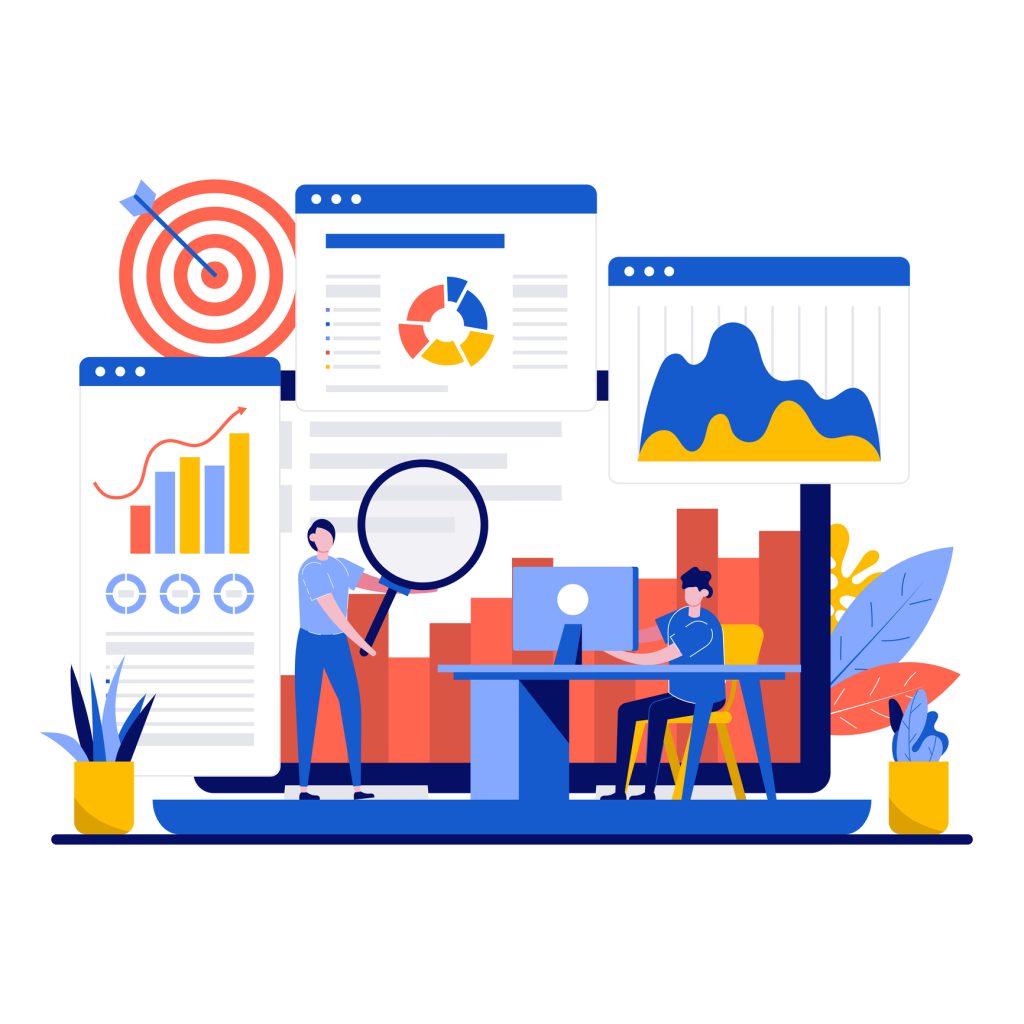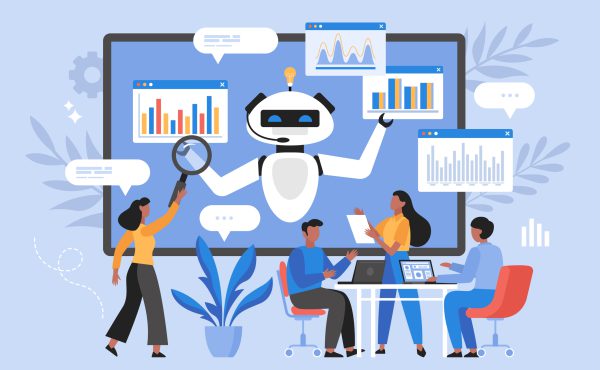Information Technology (IT) is constantly evolving, with innovative technologies emerging and redefining the boundaries of what is possible. Amidst this rapidly changing landscape, managing and streamlining operations becomes a formidable challenge for IT departments globally. It is where AIOps, or Artificial Intelligence for IT Operations, emerges as a game-changer. By integrating AI into IT operations management, organizations are positioning themselves at the forefront of the future, ensuring smoother, more efficient, and adaptive operational workflows.
What is AIOps?
At its core, AIOps stands for “Artificial Intelligence for IT Operations,” representing a revolutionary approach to managing IT operations. As the digital landscape becomes increasingly complex and data-driven, the sheer volume of information that IT departments must deal with has multiplied exponentially. It is where AIOps steps in.
AIOps is a fusion of big data and machine learning designed to provide real-time analytics and insight into IT operations. It captures vast amounts of data from various IT operation tools and platforms. Then, it uses sophisticated algorithms to analyze this data to extract information far more helpful than from statistical analysis.
Why is AIOps Crucial for the Future of IT Operations Management?
In the rapidly evolving realm of IT, AIOps emerges as an essential tool, especially when understanding its unique capabilities. One of the most notable features is its Predictive Analysis. Leveraging machine learning algorithms, AIOps can anticipate issues even before they happen. This foresight allows organizations to engage in proactive problem management. Imagine being able to forecast potential system outages or degradations, enabling companies to take steps in advance, minimizing downtime, and significantly enhancing the overall user experience.
But AIOps doesn’t stop at mere detection. Its prowess extends to resolution with its Automated Remediation feature. When a challenge is pinpointed, the system springs into action, initiating corrective measures autonomously. The beauty of this lies in eliminating the need for constant human oversight, propelling IT operations to a level of efficiency and responsiveness previously unattainable.
With the overwhelming deluge of logs and alerts that characterize modern IT operations, traditional tools often find themselves outpaced and inundated. Here’s where AIOps brings a fresh perspective with its Anomaly Detection. By deploying sophisticated algorithms, AIOps meticulously comb through data, spotting anomalies and effectively segregating critical alerts from the mundane. This precision ensures that IT professionals are summoned when a genuine concern beckons them.
Taking a step back and looking at the broader picture, AIOps further empowers teams with Enhanced Decision Making. By serving as a centralized hub aggregating data from diverse sources, it dispels the shadows cast by isolated data repositories. Teams are thus equipped with a comprehensive view of the IT landscape, fostering a culture of informed, data-driven decisions.
Lastly, scalability becomes paramount in a world where businesses are in a perpetual state of growth and evolution. AIOps, with its forward-looking design, stands prepared for this challenge. These platforms are crafted to evolve with enterprises, accommodating their burgeoning needs without the constant need for recalibration or overhauls.
As businesses strive to navigate the intricate corridors of modern IT, AIOps offers a beacon, illuminating the path to streamlined and intelligent operations management.
Traditional IT vs. AIOps-driven Management
To fully appreciate the transformative power of AIOps in IT operations management, it’s crucial to understand how it contrasts with traditional methods. Both approaches have their strengths and weaknesses, which are paramount when making strategic decisions.
Approach to Data
Traditional IT: Historically, IT operations have relied on set thresholds and rules. When data exceeds these predetermined thresholds, alerts are generated. This approach, while straightforward, can often result in a high number of false alarms or overlook subtle anomalies.
AIOps: AIOps continuously learns from the data with its machine learning backbone. Instead of static thresholds, it can dynamically adjust and provide real-time insights, drastically reducing false positives and capturing nuanced irregularities.
Speed and Efficiency
Traditional IT: Manual intervention is a hallmark of traditional IT operations. While this might allow for human judgment, it can slow down response times and rely heavily on the expertise of the available personnel.
AIOps: Automation is at the core of AIOps. It ensures rapid response, often detecting and remedying issues before they escalate or become apparent to end-users.
Scalability
Traditional IT: As businesses grow, their IT infrastructure can become exponentially complex. Traditional IT operations might need help to scale efficiently, requiring constant adjustments and manual recalibrations.
AIOps: Designed with scalability in mind, AIOps platforms can effortlessly cater to expanding enterprises without frequent system overhauls, ensuring seamless growth.
Learning and Adaptability
Traditional IT: Conventional systems operate based on established rules and don’t inherently evolve or adapt over time unless manually updated.
AIOps: With machine learning algorithms, AIOps platforms continuously learn from incoming data, refining their operations and becoming more accurate over time.
Benefits and Drawbacks of Traditional IT
Benefits: Allows for personalized human judgment, can be more transparent as processes are explicitly defined, and may offer many enterprises a sense of familiarity and trust.
Drawbacks: Less scalable, slower response times, reliant on human intervention, which can introduce errors, and needs help with vast data volumes.
Benefits and Drawbacks of Traditional IT of AIOps
Benefits: Speedy, automated responses, reduced false alarms, seamless scalability, continuous learning, adaptability, and the ability to handle vast data volumes efficiently.
Drawbacks: Initial implementation can be resource-intensive, over-reliance on automation might need more context-specific nuances, and potential challenges in integration with legacy systems.
In essence, while traditional IT operations management has served businesses well for years, the challenges of modern digital landscapes are pushing its limits. AIOps emerges as a robust solution to handle current complexities and future challenges. However, the optimal strategy often lies in a balanced hybrid approach, leveraging the strengths of both worlds.
Challenges and Considerations
Embracing AIOps is undeniably a significant leap towards modernizing IT operations, but like every transformative process, it presents many challenges and considerations. As organizations pivot towards this innovative approach, they must be wary of potential pitfalls and nuances accompanying AI integration into the IT landscape.
- Resource Intensiveness: Integrating AI into existing IT operations is no small feat. It demands large monetary investment and considerable dedication in time and human resources. Organizations must be prepared for a potential overhaul of their current systems and workflows, which might disrupt day-to-day operations temporarily.
- Data Reliability and Accuracy: The foundation of AIOps rests on data. The algorithms thrive on vast data to learn, predict, and adapt. However, the adage “garbage in, garbage out” holds. If AIOps receives accurate and high-quality data, its outputs and decisions can be improved, leading to potentially costly errors.
- Over-reliance on Automation: While automation can significantly enhance efficiency, over-reliance can be detrimental. There’s a delicate balance to be struck. Solely depending on automated processes might lead to oversight of complex issues that require human intervention.
- Skill Gap: AIOps require specialized skills. There’s a need for IT professionals who understand not just traditional operations but also the intricacies of AI and machine learning. It might necessitate additional training for existing staff or the hiring of new talent, both of which come with associated costs and challenges.
- Interoperability Concerns: Integrating AIOps into an existing IT ecosystem means ensuring it can work seamlessly with various tools, applications, and platforms. Addressing compatibility and integration concerns can be a time-consuming endeavor.
- Cultural Resistance: As with any transformative change, resistance can be from within the organization. Employees accustomed to traditional IT operations might be hesitant or skeptical about adopting a new, AI-driven approach. Addressing these concerns and fostering an organizational culture that embraces innovation is pivotal.
- Ethical and Privacy Concerns: As AI makes more decisions autonomously, ethical considerations come into play. Organizations must ensure that the algorithms driving AIOps are transparent, fair, and free from biases. Moreover, handling vast amounts of data raises privacy concerns that must be diligently addressed.
The Road Ahead
AIOps is not a fleeting trend; it’s the future of IT operations management. Its promise lies in its adaptability and ability to continuously learn, evolve, and improve. As artificial intelligence and machine learning technologies continue to mature, they won’t just be tools but core components around which IT strategies will revolve. Here are the main positive outcomes that AIOps can yield in the future:
- Bridging the Gap Between Data and Decision-making: With the explosion of data in recent years, organizations have struggled to harness this data effectively. AIOps can bridge this gap, transforming raw data into actionable insights and enabling faster, more informed decision-making.
- Customized User Experiences: As AIOps platforms become more sophisticated, they can provide tailored experiences for IT teams. By understanding the unique challenges and needs of individual organizations, these platforms will offer solutions that are not just effective but also intuitive.
- Collaboration and Integration: In the future, AIOps will facilitate better collaboration between IT operations and other business units. The insights derived from AIOps can drive marketing, sales, and product development strategies, ensuring a cohesive approach across all departments.
- Enhanced Security: With cyber threats becoming increasingly advanced, AIOps will play a pivotal role in cybersecurity. Predicting potential vulnerabilities and proactively addressing them can fortify defenses and protect critical business assets.
For businesses, the question isn’t if they should adopt AIOps but when. The shift towards AIOps is inevitable. Early adopters stand to gain a competitive edge, benefiting from optimized IT operations and positioning themselves at the vanguard of the next wave of IT innovation. The ability to predict, adapt, and respond in real-time will distinguish industry leaders from followers.
Conclusion
The trajectory of IT operations is irrevocably headed towards an AIOps-centric future. As we’ve journeyed through the contours of its capabilities and the inherent challenges it presents, the underlying theme remains consistent: AIOps represents a monumental shift in optimizing IT operations, promising unparalleled efficiency, agility, and foresight. In an era defined by data surges and rapidly evolving technological landscapes, integrating AI in IT operations isn’t just a luxury—it’s a necessity.
Traditional IT operations, while foundational and significant, are increasingly challenged by the demands of modern-day businesses. On the other hand, AIOps brings the adaptability and precision needed to navigate these intricate digital terrains. Yet, it’s essential to approach this transformation with a balance of enthusiasm and caution. While AIOps offers transformative potential, its seamless integration requires meticulous planning, a commitment to continuous learning, and an appreciation for harmonizing human expertise with AI-driven automation.
In closing, the dawn of AIOps signifies not just the evolution of IT operations but a paradigm shift in how businesses perceive and harness technology. As organizations embark on this exciting journey, they don’t merely adopt a new tool; they embrace a future vision where data-driven insights, proactive solutions, and intelligent automation pave the way for unparalleled growth and innovation. The future of IT operations management is not just about managing technology—it’s about harnessing it to shape tomorrow.




